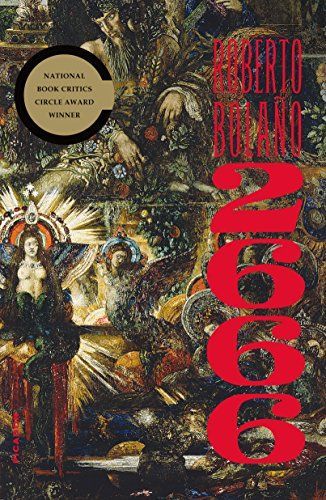
2666
Meesterwerk van de Chileense auteur Roberto Bolaño, wiens oeuvre wij met ingang van dit najaar (opnieuw) zullen uitgeven, te beginnen met deze postuum verschenen roman die wordt gezien als Bolaño's magnum opus: een hallucinerende, epische roman gesitueerd in de grensstreek tussen Mexico en de Verenigde Staten, waar voortdurend vrouwen en meisjes worden vermoord. Niemand weet wie achter de (honderden) moorden zit: de maffia, een psychopaat, de overheid? 2666 is een universeel verhaal over goed en kwaad, leven en dood, fictie en feit, een van de belangrijkste romans die deze eeuw zijn verschenen.
Reviews
Luc Jeanson@captainslatt
kentuckymeatshower@kentuckymeatshower
Ghee@clubsoda
Eli Alvah Huckabee@elijah
Patrick Book@patrickb
Miles Silverstein@thewaxwingslain
Rohan Uddin@thesparrowfall
Jordan Card@origintales
Nelson Zagalo@nzagalo
Lis@seagull
Donald@riversofeurope
Donald@riversofeurope
Donald@riversofeurope
Landen Angeline@landen
Maria José Sandoval@majosandoval
Fernando Andrade@elfre
Melody Izard@mizard
Phil James@philjames
Alithea@alithea
Roland Bekk@ilorkkeb
Alyssa C Smith@alyssacsmith
Yasemin@yerdem
Morgen Ruff@morgen__ruff
Barbara Guerrero@oddityMX
Highlights
Eli Alvah Huckabee@elijah
Edward Steel@eddsteel
Edward Steel@eddsteel
Edward Steel@eddsteel
Edward Steel@eddsteel
Edward Steel@eddsteel
Edward Steel@eddsteel
Edward Steel@eddsteel
Jordan Card@origintales